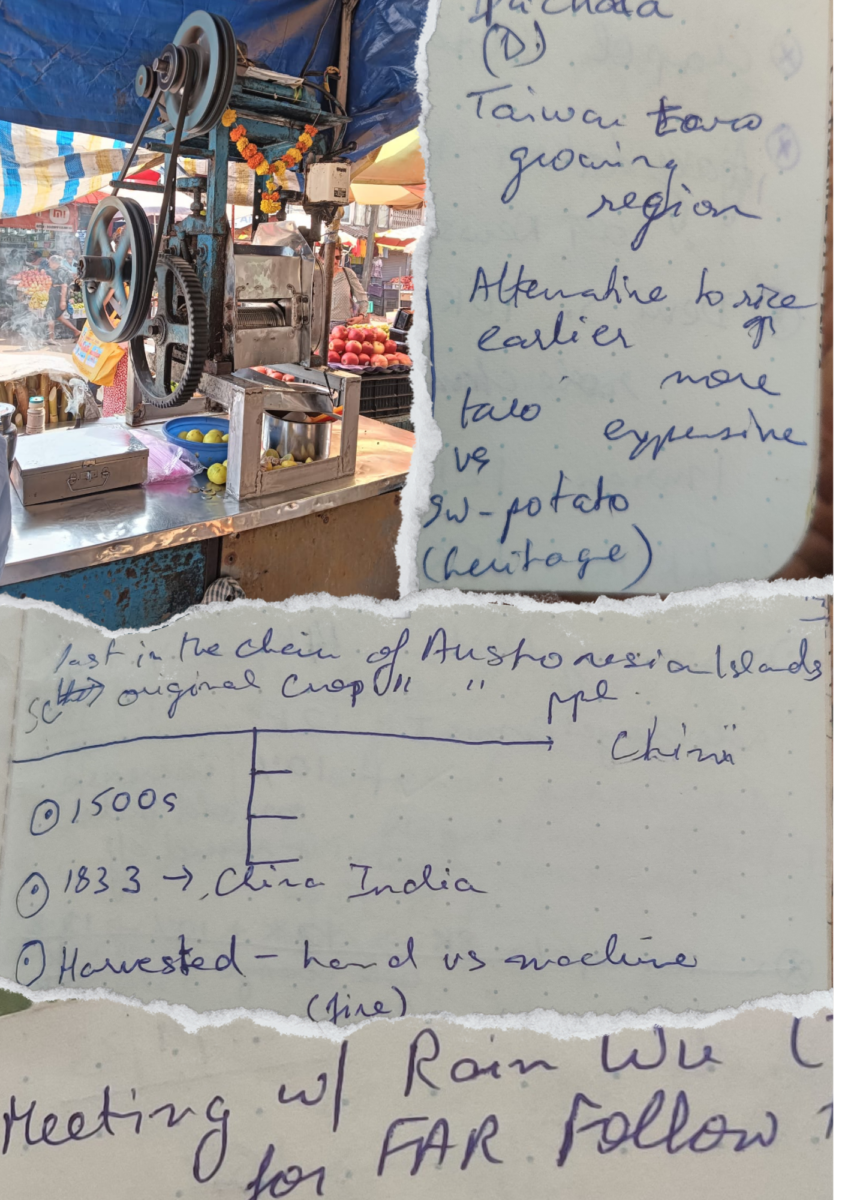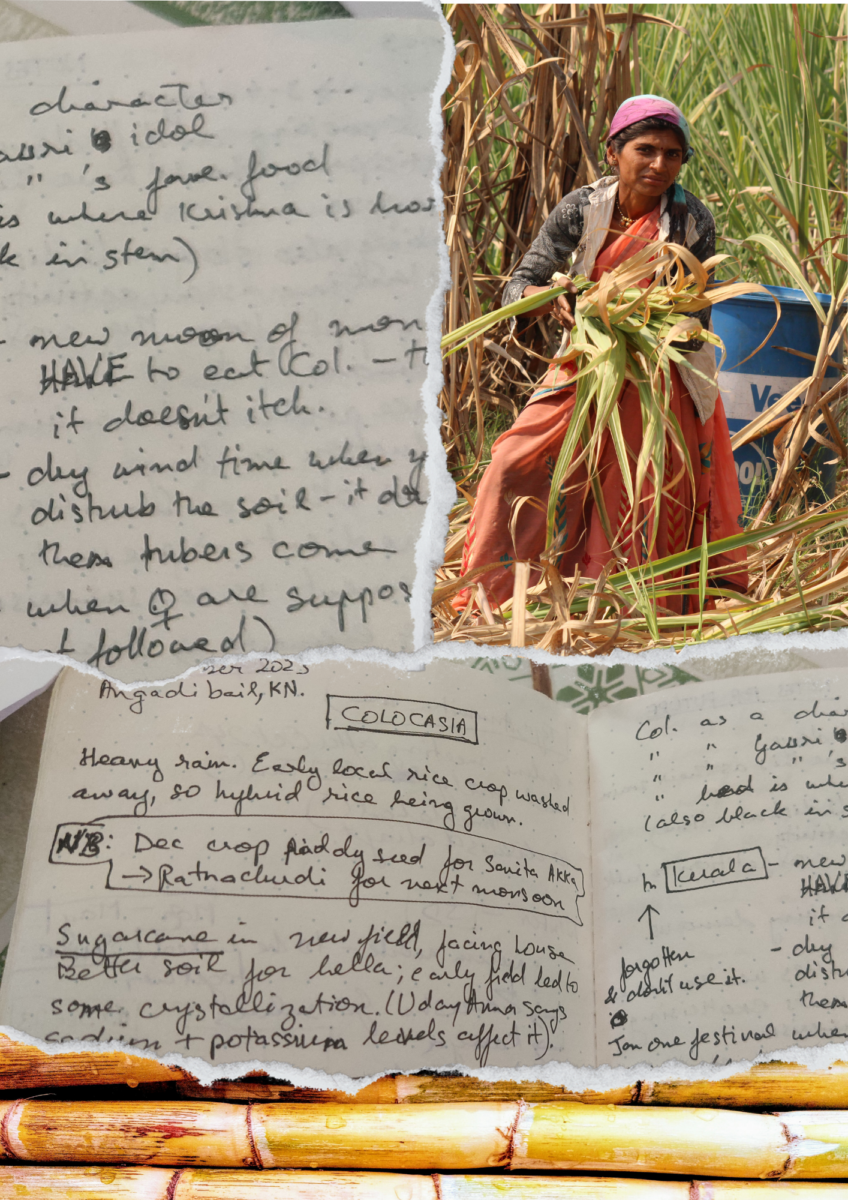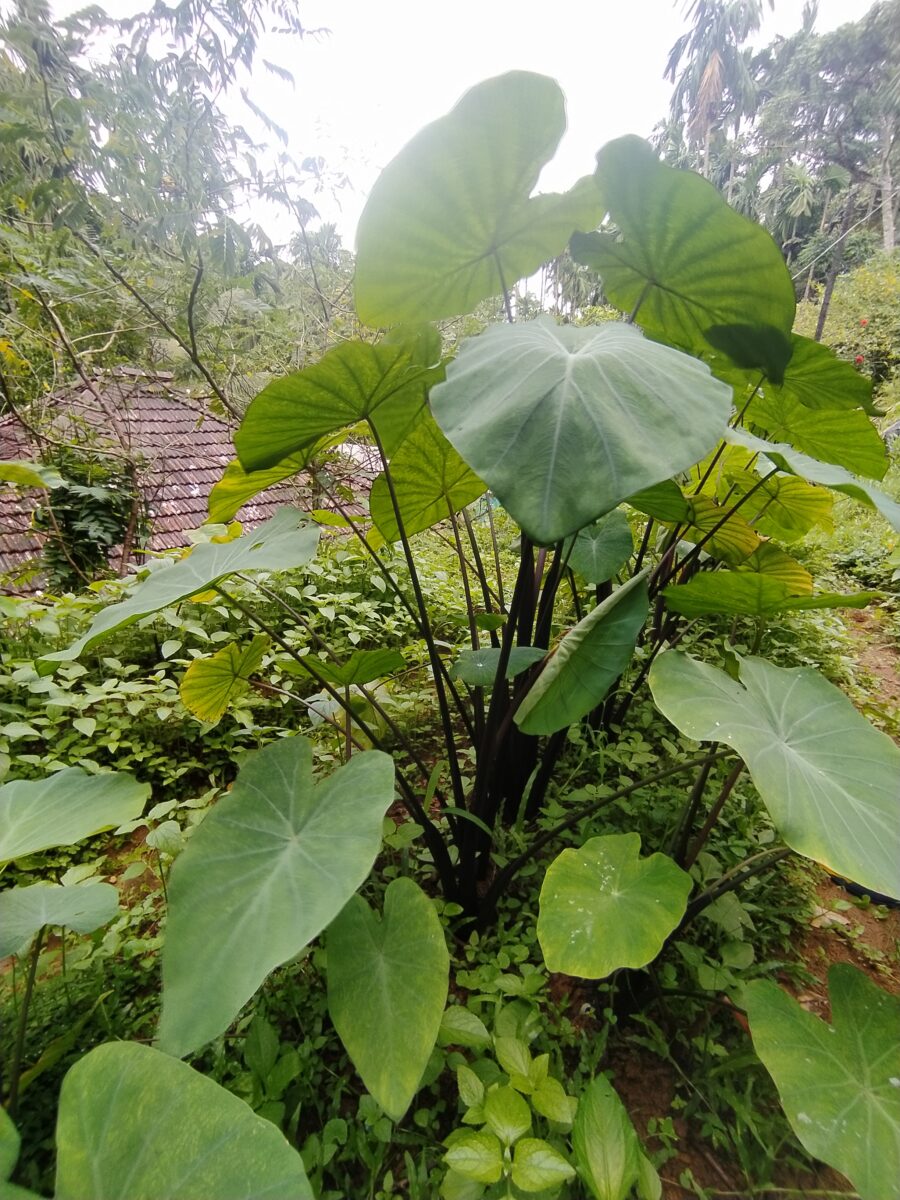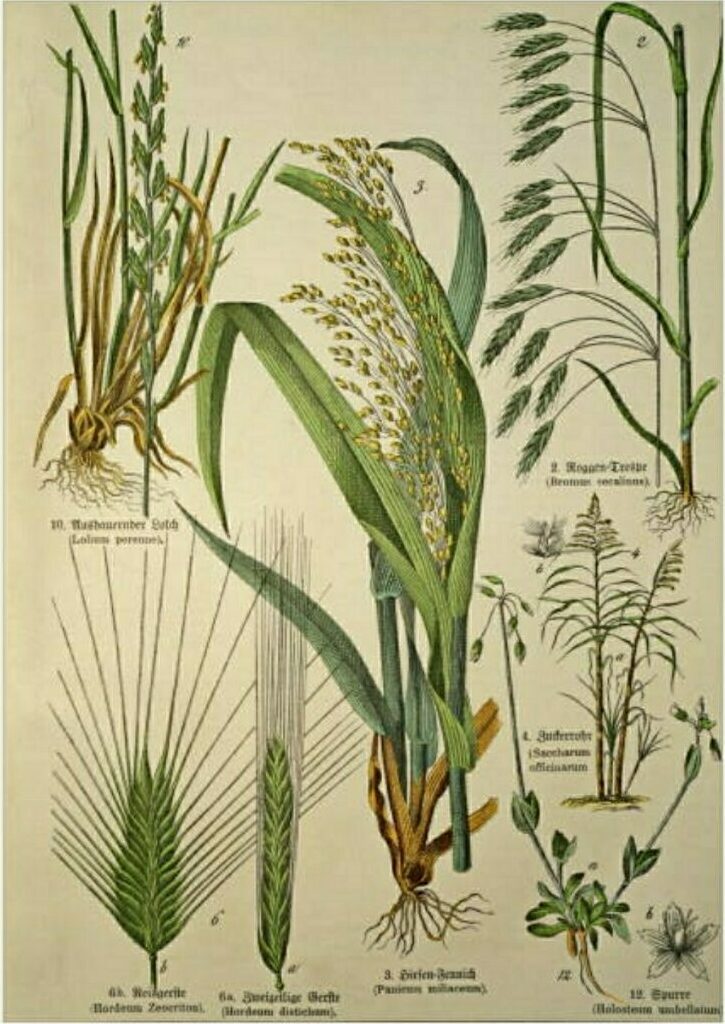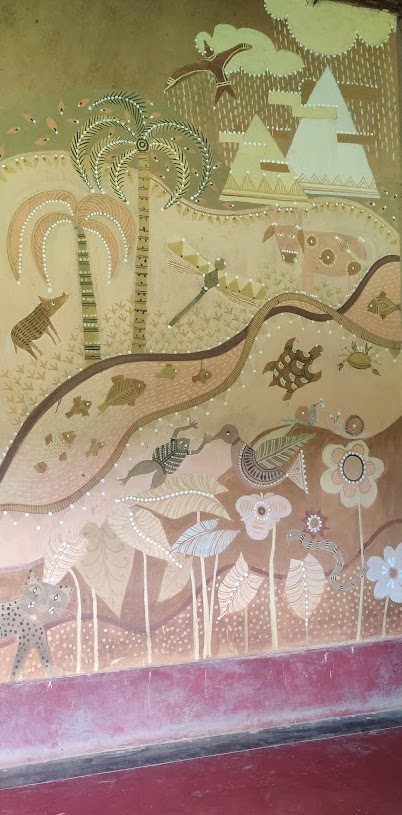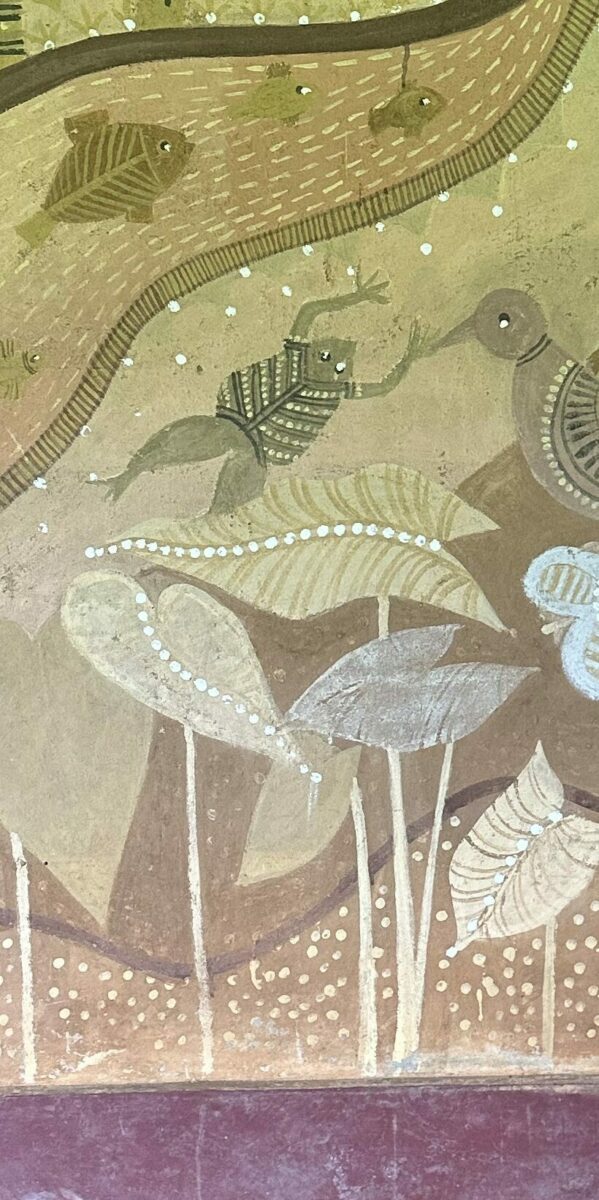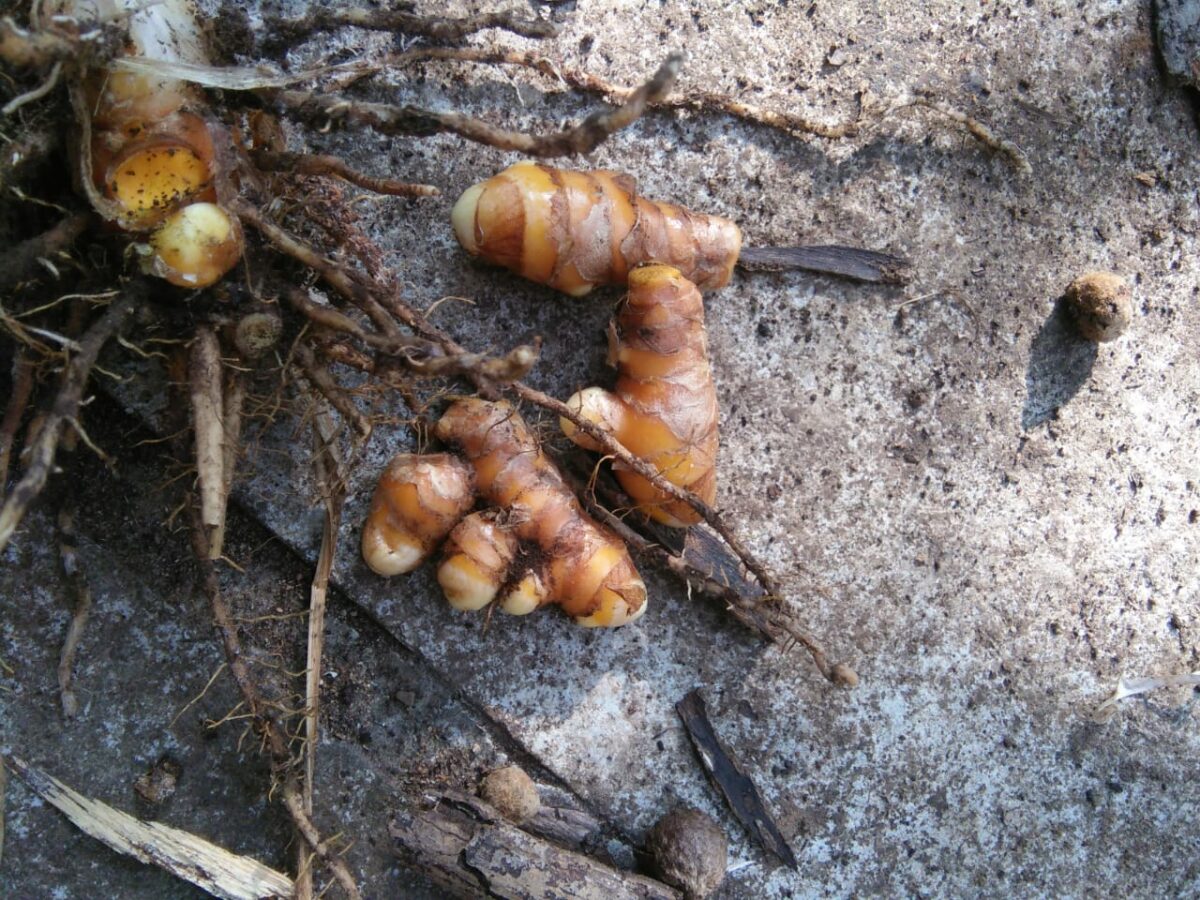Colocassia & Sugar Cane
Rain Wu and Shalini Krishan share stories of the past as lessons for the future. Shalini’s long term ethnobotanical research in the forests of Karnataka gleans disappearing practices of cooking Kosu also known as Taro which are the roots of the Colocasia plant. She exchanges her research with Rain Wu who in turn offers an exploration of the history of Sugar Cane plantations and the cultures infused by sugar connected to her home in Taiwan.
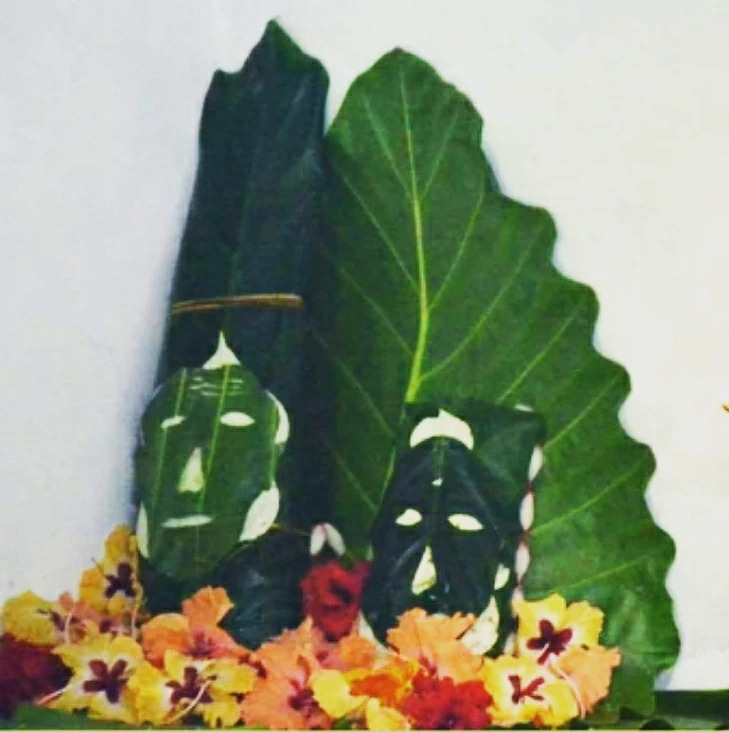
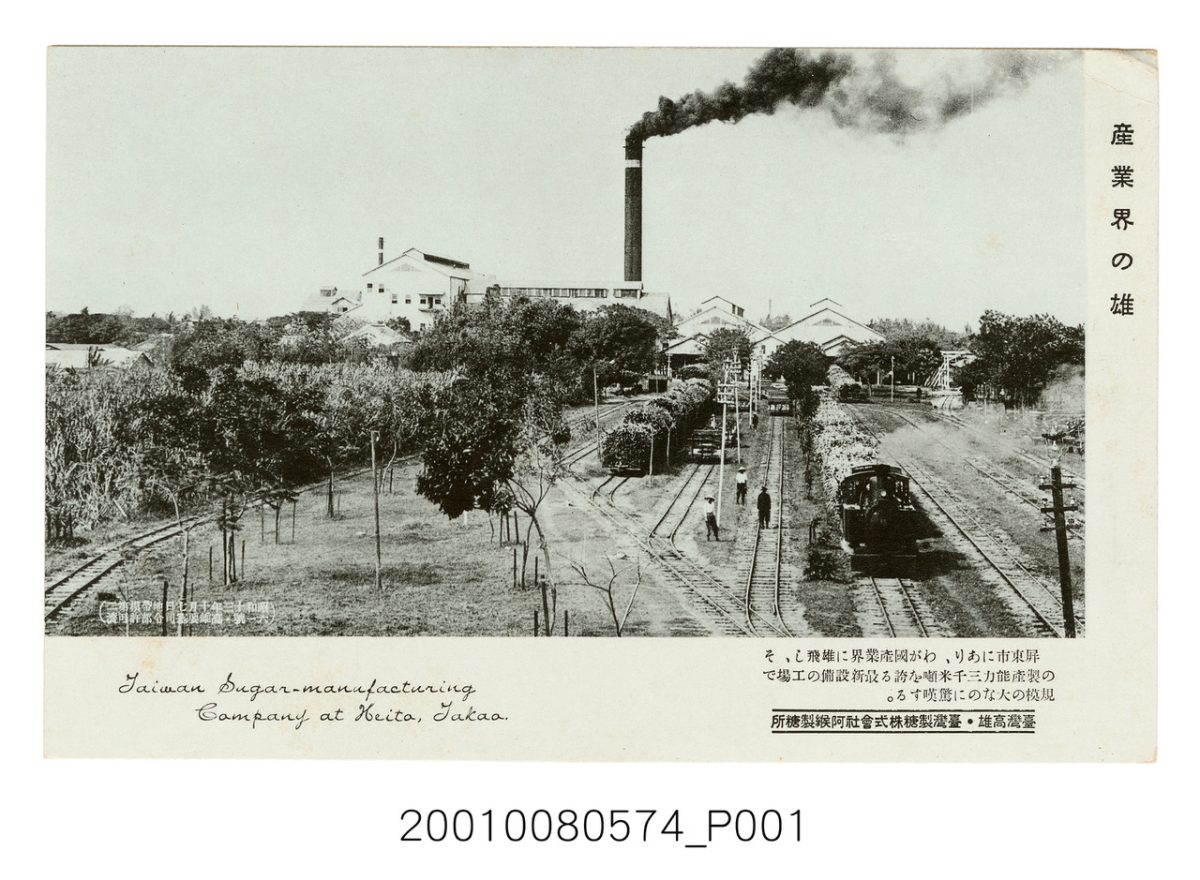
Rain Wu, Sugarcane
Sugarcane was the main economic crop in Taiwan during Taiwan’s various colonization periods. The planting of sugarcane influenced the infrastructure across Taiwan as fields were turned into agricultural plantations and processing factories were built with railway connections to take the harvests to the port. When the price of sugar was no longer lucrative in the 1990s, the processing plants ceased to operate, Tai Sugar Corp owned factories and warehouses became derelict, along with empty fields and aging villages.
Since the 2000s, many of these sugar factories have been turned into cultural districts using the warehouses as exhibition spaces. The most recent turn of t events comes in the 2020’s, when the plantations are turned into solar panel fields. Colloquially, the verb to “install” solar panels in the fields is “zong”, meaning to plant.
Through years of planting and trading sugar through the old capital in southern Taiwan’s Anping Port, sugar has become a status symbol and families sweeten their dishes to display their wealth in banquets. The local palette is distinctly sweeter than other parts of Taiwan, forming another habitual influence from the plant to people
Shalini Krishan, Colocasia
Colocasia (Kannada: kesavu), is an incredibly diverse family of plants with edible leaves, stems, tubers and runners, that grows along both coasts of India. With their large waterproof leaves, life-sustaining tuberous roots and incredibly vegetative persistence throughout the monsoon months of the year, these remarkable plants are themselves an archive of continuity and resistance.
The people of the Western Ghats have a long tradition of eating different varieties and parts of the Colocasia plants at different seasons. Many Colocasia plants are slightly toxic, so it is crucial to be aware of the times when they can be eaten and the ways in which they should be prepared, processed and cooked. As one of the few edible plants that prolificate in the monsoon months, it takes on great importance as a source of food and nutrition, which is reflected in the dizzying array of dishes made using its leaves, stems, and runners.
Alongside its culinary uses, Colocasia emerges as a character, with its own story – involving the travails that led to its coming to the region and deciding to stay there; the varying roles it plays in religious ceremonies and folktales; even the ways in which it collaborates with both human and non-human denizens of the area. As an example, it is believed that Colocasia is the favourite food of the goddess Gouri, which she eagerly looks forward to eating when she visits her mother’s home: a reflection of its highly nutritive qualities, as well as the reason why Ganesh Chaturthi festivities in the region traditionally worshipped Colocasia leaves stuffed with other medicinal and edible plants as the main deity.
-
Correspondence
